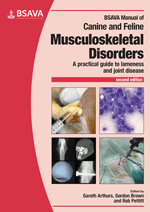
Full text loading...

The postoperative period is as important as the surgery itself in terms of analgesia and rehabilitation and depends on a team approach involving the surgeon, registered veterinary nurses, animal care staff and owners. This chapter discusses analgesia, immediate postoperative nursing care, physiotherapy/rehabilitation, discharge and re-examination, and exercise management. Operative Technique: Application of a soft padded dressing.
Postoperative management and rehabilitation, Page 1 of 1
< Previous page | Next page > /docserver/preview/fulltext/10.22233/9781910443286/9781910443286.17-1.gif

Full text loading...
















